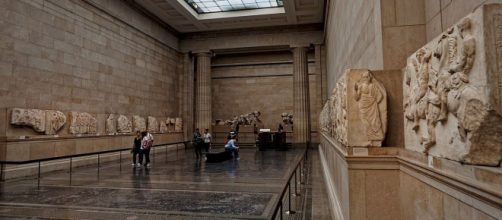The back-and-forth between the Brits and the Greeks is a little like Prince Harry's quarrel with his brother Prince William. It doesn't end. Granted, the Brits are known for their stiff upper lip, but it's as if rigor mortis has set in both cases.
The Guardian reports that the museum has been in talks with Greece over the return of their treasure for more than a year. A year? Hasn't it been longer than that? The Brits have been holding fast to the Parthenon sculptures since 1832.
That's when British diplomat Thomas Bruce, 7th Earl of Elgin, stripped 253 of them from the Parthenon and sold them to the museum for $50,000.
What's yours is mine
The Telegraph cited an agreement that will allow "some items returned on loan." Some items? On loan? Isn't that like deciding that should your family heirloom is stolen and sold off, you can only borrow it and only part of it at that?
But wait, even letting the Greeks borrow "some" of what's theirs is up in the air. A statement from the museum suggests that all will remain in the air: "We're not going to dismantle our great collection as it tells a unique story of our common humanity."
But holding onto stolen property tells a different story. Museums are supposed to be living encyclopedias of art history. The British Museum is abusing the privilege.
What accounts for this British sense of entitlement?
When Lord Elgin purloined the sculptures from the Parthenon, his excuse was that the Greeks didn't care about the sculptures and wouldn't take proper care of them. But history makes clear he was wrong on both counts.
When the Turks, who occupied Athens in the early 1800s, ran out of bullets in battling the Greeks and began melting down the Parthenon's 2,300-year-old lead clamps for bullets, Greek soldiers sent bullets to the Turks to stop the defacing. So much for not caring.
As for taking care of the marbles, Greece built a museum to house them that won several awards including one from the American Institute of Architects. And it is ranked 6th in the Travelers Choice Award of the 25 Best Museums in the world.
Careless hands
In contrast, when it comes to taking care of the marbles, the British were not careful. William St. Clair, a British authority on the Marbles, told the London Observer about a British Museum cover-up that he discovered in the diaries of museum official Roger Hinks.
The diaries disclosed that the antiquities had been badly damaged at the museum. London's polluted air is said to have eaten away at the marble because the museum didn't use proper air-quality filters until 1962.
Also, St. Clair blamed the museum for a bungled cleaning in 1938 when metal scrapers were used to scrub the marble to an alabaster white to show classical perfection. To mask the damaged surface, the museum coated the carvings with wax.
It's notable that the cleaning was ordered by Lord Duveen of Milbank, the British Museum's benefactor, who, St. Clair said, made his fortune retouching old masters and selling them to gullible Americans.
As for the Brits, the Greeks will go without their treasure until they surrender their aristocratic notion of noblesse oblige.


